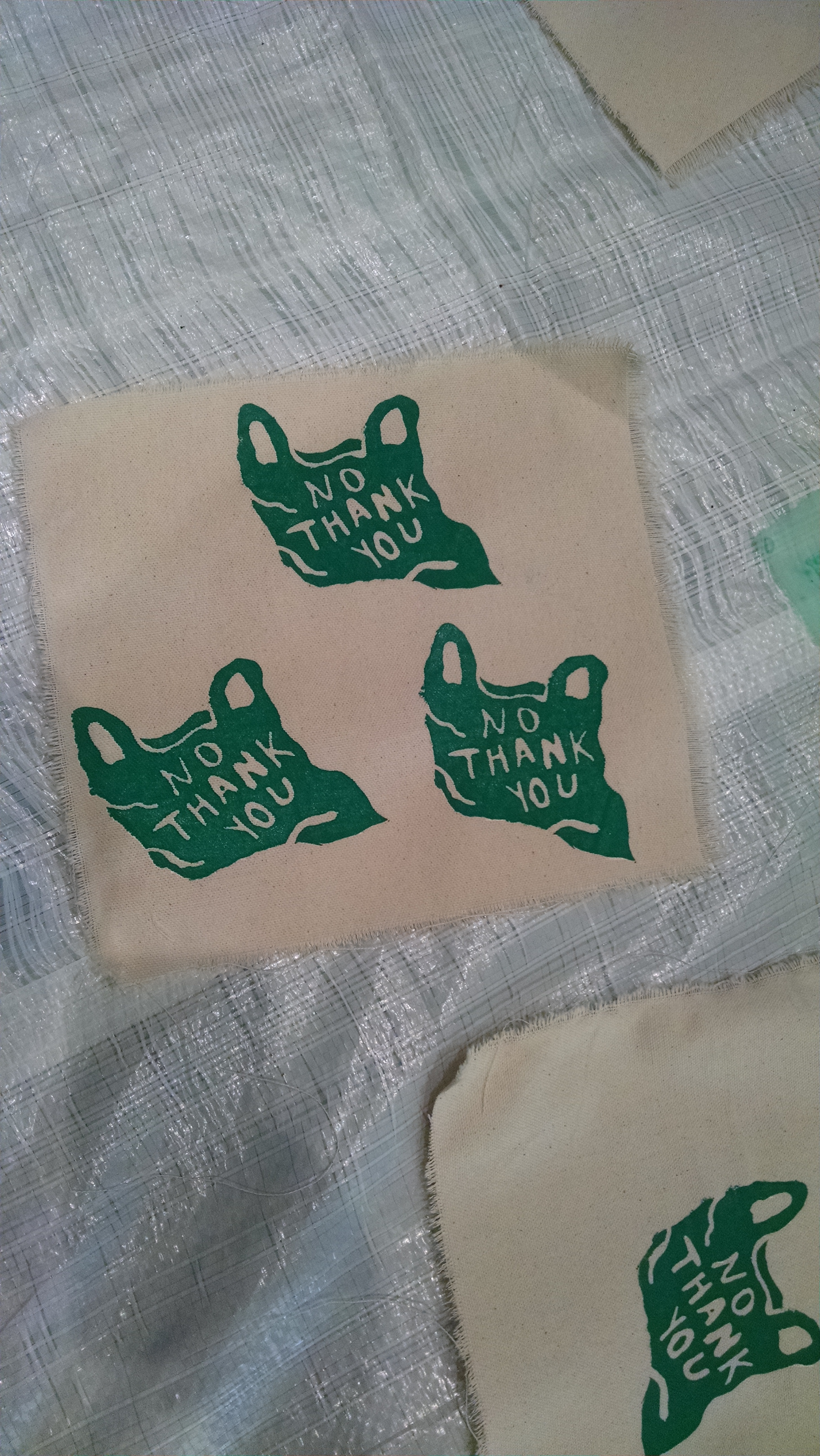
FEATURED ESSAY
Last Friday, WAM Collective hosted a workshop with local artist, designer, and arts educator Witt Siasoco. Typically his work is inspired by problems within his immediate community, so we asked him to discuss the role of printmaking in activism and communication. His work has appeared in protests, on the lawns of local condemned houses, in rundown suburbs on the verge of gentrification, and also in formal art settings.
Witt asked us to introduce ourselves by listing our passions, and engaged us all in conversation based on our various unique combinations of interests. Then, we wrote about our ideas and sketched out potential designs for our own original screen prints.
We were actually able to make our own screens, right then and there, very quickly and without the use of a computer or expensive printmaking materials. We used embroidery hoops as frames and painted screen blocker onto mesh. Then we pushed ink through the negative space left untouched by our paintbrushes.

Some of our prints directly related to issues of feminism, racism, war, and peace, but some were more abstract. Our conversations and passions undoubtedly guided even the most aesthetically driven prints.

The accessibility of printmaking, physically (technique and materials) and conceptually, is not only beneficial for college students on a budget, but was also a valuable tool for students of the Evangelical Lutheran Church Art and Craft Centre at Rorke's Drift in South Africa in the 1960s and 70s Apartheid. A current exhibition at WAM, Black & White, displays works from students of the school and discusses the intricacies of expressive art practice in that time and place of ruthless segregation. Printmaking activism at its finest.


